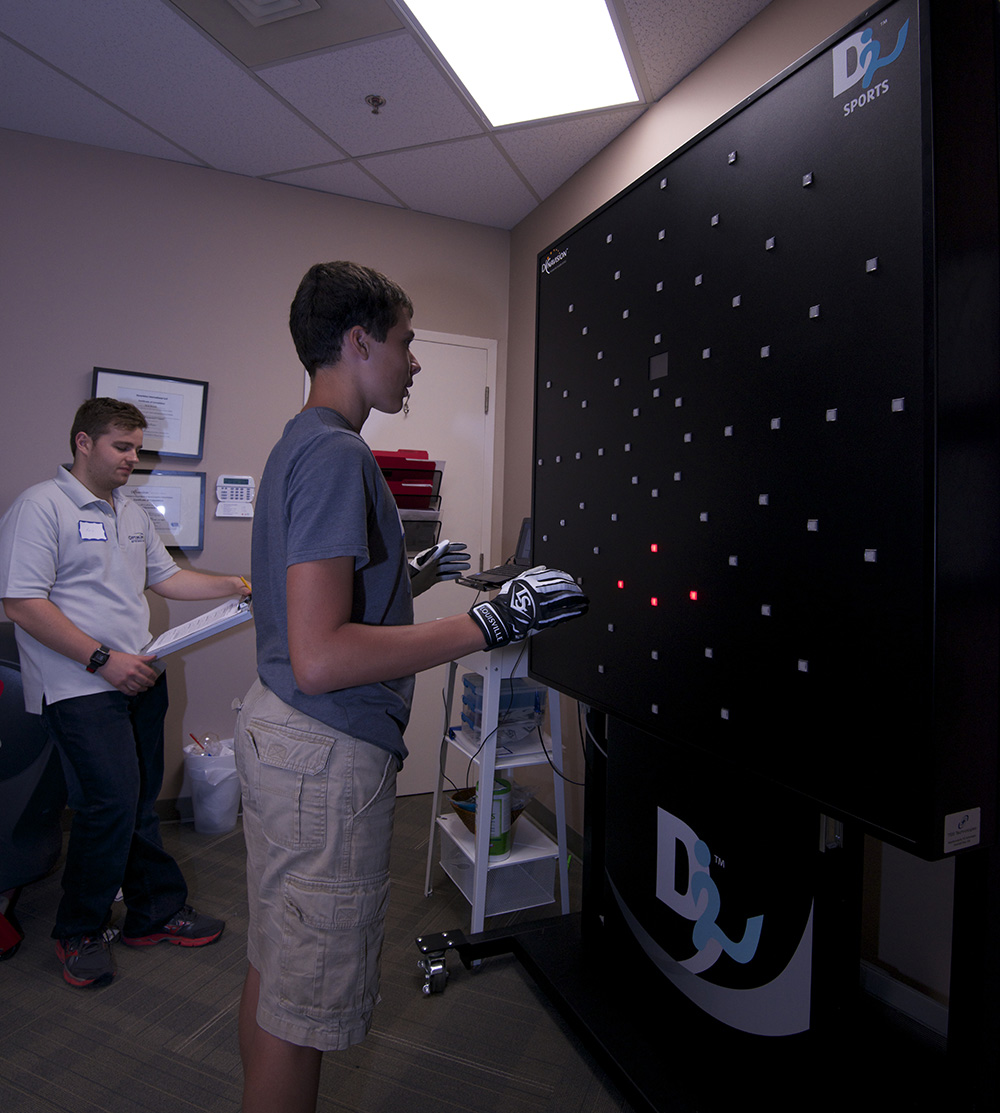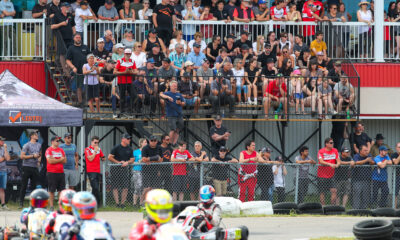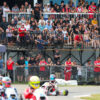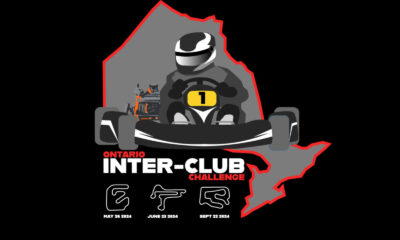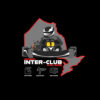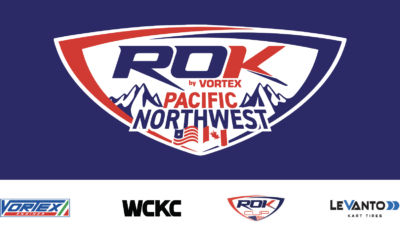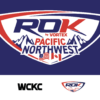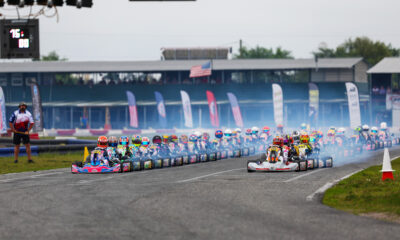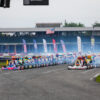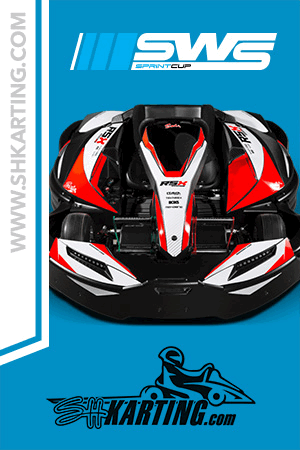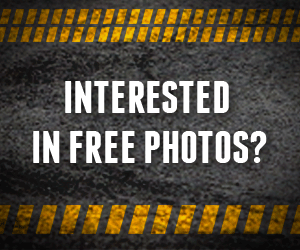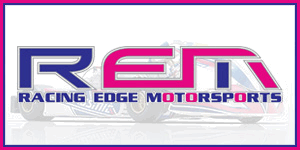CKN Exclusive
Reaching for the Optimum Edge Helps Reid Arnold Back into the Drivers Seat
As I drive into the parking lot of Optimum Edge in Richmond Hill, I begin thinking about my impending interview with the Arnolds. This family has been part of the karting scene for many years, and has won many championships and raced in the top North American categories of the Florida Winter Tour, and the SKUSA Super Nationals. Known for their spirited competition, the Arnold family has realized huge success in the kart-racing scene with young driver, Reid, at the wheel.
Sadly, all that changed in 2011, when Reid’s career changed right before his eyes when he was involved in a dramatic crash at Goodwood Kartways. When the green flag dropped, 30+ Sr Rotax karts sped towards the first turn; the leaders quickly and successfully entered the turn, but calamity occurred in the rows directly behind. Without an opening Reid Arnold was boxed in, and he quickly collided with another driver before he and his kart rolled and he went headfirst into the Turn-one barrier. Reid managed to free himself, and emerged feeling dazed from the ordeal; he begged to get back into the race, but with the chassis ruined, and medical personnel advising otherwise, Reid was forced to sit on the sidelines for the remainder of the day.
As they pulled out of the Goodwood pits that day, the Arnold family was yet to realize that a long and difficult journey lay ahead. Unknown to them at the time, Reid had suffered a severe concussion that began affecting his life almost immediately. Not only would his emotions be greatly altered, his diet was affected, and his entire self-worth and confidence would be stolen away from him without a moment’s notice. As the days wore on, Reid’s brain began to heal, but lasting damage had already started impacting his life.
Firstly, Reid’s problem-solving and cognitive abilities had been massively affected; before the crash, complex calculus problems were just another piece of homework for the intelligent high school senior. Now, simple equations required the full extent of his brainpower. For Reid, the effects of the concussion were so impactful to his school life that he ended up dropping out, and he and his family began to search for answers that would allow Reid to return to his former state of health. Reid’s mom, Anne recounts, “He developed severe anxiety and depression, had trouble sleeping and developed an eating disorder, and put on a substantial amount of weight in a very short time.” She also remembers that “he literally dropped out of life socially and stopped engaging in every day life. It was very difficult for us to witness Reid’s journey to a very dark place.”
The Arnold family sought medical help from British Colombia to Arizona and back, but nobody seemed to be able to put a finger on Reid’s unique condition that would lead to a diagnosis, and ultimately, a prescription for rehabilitation. Finally, McMaster Children’s Hospital’s Pediatric Brain Injury Clinic confirmed that the source of Reid’s problem was located in the right-frontal lobe of his brain.
To say that this was a difficult time would be an understatement. Reid’s newfound inner demons were exacting control over his thoughts, and this once happy young man lost all desire to race, and all ability to concentrate. The drive and passion that once held him together had broken down on the side of the road, leaving Reid, hopelessly stranded.
With an official Diagnosis finally given, the Arnolds soon learned that support for Reid may take up to two-years to be initiated. Having received the disheartening news, Reid and his family set out to find an alternative. After an exhaustive search, the Arnold family discovered a program known as Neurofeedback. It works by sending static signals from sensors connected to the scalp and ear lobes and by mapping signals in the brain that ultimately help it “re-learn” information after an injury. The treatment involves having the patient sit in a quiet room with a pair of headphones on, listening to soothing music as the program maps the brain. Through this, the user’s brain is able to calibrate itself back to normal. The results of the session are broadcasted to a computer monitor for analyzing at the conclusion of the session.
With the success of this trial, the Arnolds decided to purchase the system necessary for this type of training, and began using it on Reid. The results were incredible; Reid’s depression and anxiety began to subside, and he was finally showing improvement. The family was ecstatic with the results and began researching other beneficiary options to speed up Reid’s rehabilitation.
The next stage of Reid’s rehabilitation involved a device called the ‘Dynavision D2’. Closely resembling a large blackboard, this machine was equipped with 64 raised lights in 5 rows spread around the surface, and was used to train reaction time, multi-tasking abilities and many other skills. Just like Neurofeedback, this training was pivotal in Reid’s recovery, and he soon found the motivation to return to racing, through improved reaction speed times and scores on the Dynavision D2.
The improvements in Reid’s health and cognitive abilities continued to motivate the family to research and seek therapies and treatments that would continue to help Reid’s brain recover; and through this process, Anne and Reid discovered new software that aimed to train the eyes and how they perceive objects.
After roughly a year of using these programs, Reid’s cognitive ability and emotional state began returning to normal, and his mood and motivation reached heights that surpassed everyone’s expectations. Because of this experience, the Arnold family began thinking about the entire process in a business sense, wondering if they could take their own experience and use these technologies to start a business so that other athletes and clients could receive similar brain training therapies.
Both Anne and Reid enrolled in special certification courses, giving them the necessary credentials to use the equipment and tailor them to specific clients’ needs. The journey took them to Ottawa, Ohio and Nevada to receive the training; while there, they began to network with other providers, hearing stories of how this technology has benefited them. Because they lacked the medical training required to diagnose and prescribe treatment, the Arnolds focused on building a brain-training program that would enable athletes to gain a more competitive edge. Focusing strictly on how the eyes and brain communicate, they began putting together a business plan.
“Both Reid and I have taken extensive courses in all aspects of the business from Neurofeedback/Biofeedback, Dynavision, NeuroTracker, and Vizual Edge. We are certified in Sports Vision Trainers and have advanced accreditation in the Dynavision and Neurofeedback areas,” explains Anne.
The business plan detailed a clinic that would exist to train athletes to optimize brain function, as well as provide therapies to help those who have suffered concussions. Soon, the mother/son partnership, ‘Optimum Edge’ was born, and today, it provides training to many, including those who have suffered traumatic brain injuries.
Even though the transition into this industry was a difficult one for Anne and Reid to tackle, Optimum Edge is now up and running. Athletes and sports teams are already enrolled with Anne and Reid and experiencing the benefits of their programs. Hockey teams, university sports teams, and fellow racers are already reaping the benefits of Optimum Edge’s programs.
As I sat in Anne’s office conducting this interview, the door swung open behind me, and a sarcastic, but familiar voice spoke up, capturing my immediate attention.
“What are you doing here?” asked an enthusiastic Elvis Stojko, Maranello North America DD2 pilot, and two-time Canadian Olympic medalist.
The brief conversation between Stojko, a trusted friend, and myself only bolstered my already high opinion for the program. His claims of improved concentration and increased reaction speeds provided testimonial to the service that Reid and Anne provide. Clearly, Optimum Edge has given the Arnold family a vehicle for helping athletes get the most out of their game.
As part of my own due diligence for research purposes, and for pure interest sake, as well, I hopped into the Neurofeedback machine at the conclusion of my interview. I sat in a brown leather lazy boy chair that sat comfortably in the corner of a small room. The only lighting that existed in this room was the ambient glow of a battery-powered lamp, and the dimly-lit computer monitor. Reid attached the necessary sensors to my scalp as I inserted the headphones. I began wondering what the entire experience would entail as I felt the cold paste stick to my skin. The chair reclined and as Reid handed me a blanket, he modestly said, “Some people become very relaxed” during the process.
The soothing, almost cosmic music soon began playing through the headphones and Reid gave me an enthusiastic thumbs up as he left the room and closed the doors behind him. I relaxed happily, as the sounds played through my ears and the monitor began mapping my brain activity.
As I lay there, I began pondering my personal experience as a victim of concussion. My own recovery, riddled with anxiety, depression and a lack of patience, made me better understand the sustained effects of brain trauma on one’s life, and how much Reid must have suffered. I realized that while listening to his journey, I was intimately caught up in the interview because the story was so close to my own personal experiences. Concussion symptoms often attach themselves like a leech, feeding off of the very happiest part of one’s personality, leaving feelings of worthlessness and self-doubt in their wake.
The interview experience with this family had me feeling so confident about the mission that Optimum Edge is on, that I eagerly anticipate my returne to their facility to continue with, and benefit from, the treatments they provide that will surely serve to improve both my personal, and professional career.
The healing and transformation that Reid has experienced has been nothing short of incredible. This young entrepreneur lost his ability to love the sport, but he has since returned to racing in the Formula 1600 series of Ontario and captured the 2015 title at the final race of the year. From suffering a life altering crash, to starting a business geared to helping athletes, Reid and Anne are optimistic about future as Optimum Edge researches the next tool to add to their inventory.
“The RT1 is a modular portable system we can take anywhere and run multiple configurations for any sport or function,” explains Reid.
Although the journey for Reid has been remarkable, he still has a ways to go. Learning only a few weeks ago, the damage was worse than originally thought. Resulting in deficits to his executive functioning, this affects his initiative, motivation and working memory as well as his processing abilities. After a long 2-year wait, Reid is finally undergoing occupational and rehabilitation therapies to help his recovery progress even further.
“The experience has brought out the obvious lack of diagnosis and support for concussion victims.” Anne expressed passionately, “sometimes the symptoms are not always visible or physical. Awareness in these areas will improve the recovery for many who have had a concussion and still suffer from affects long after the injury.”
“Brain Skills training is the best kept secret in sports right now.”
Currently, Reid continues his healing process from the accident that occurred more than three years ago. His progress has been remarkable with the use of the machines and main goal of Optimum Edge is to continue mastering the hardware and become pivotal in injury recovery and prevention that any athlete in any sport can benefit from.



